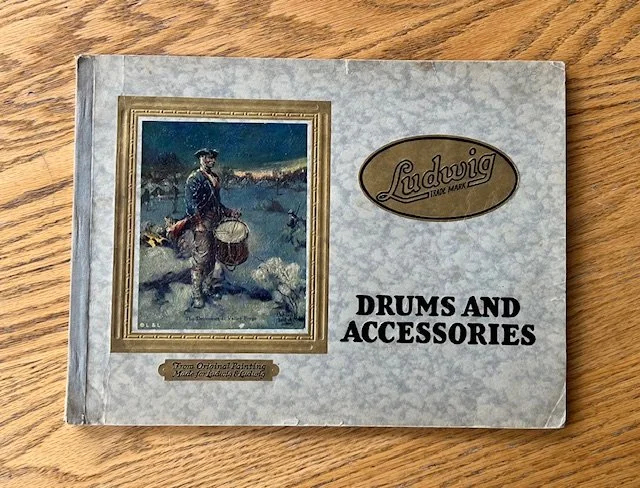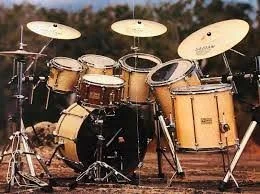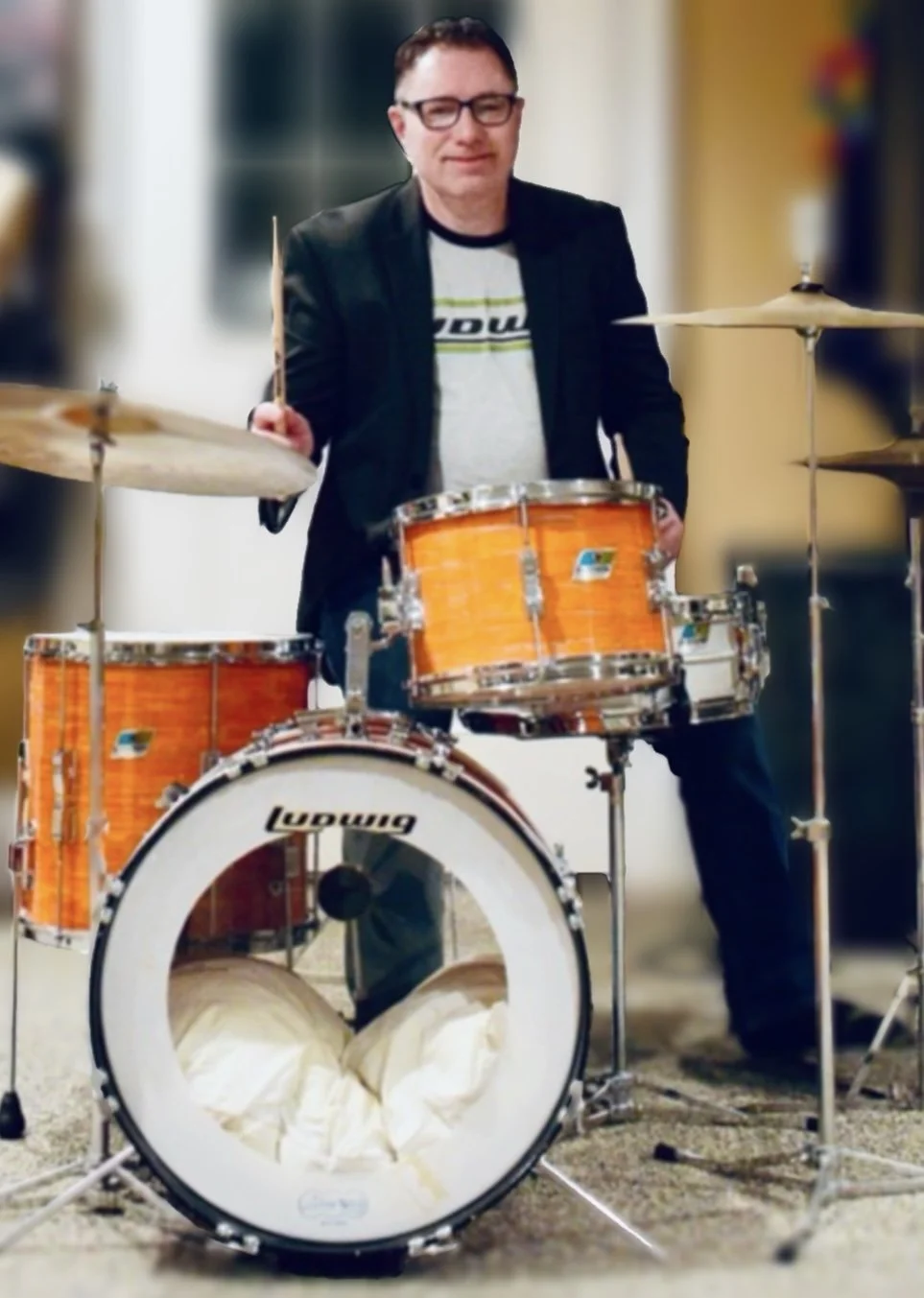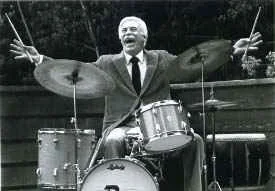In 1975 I purchased a chrome over wood Slingerland kit that I travelled extensively with over the next 11 years. This was a monster kit with a 28x14 bass drum,
It has some beautiful graphics inside, including color pictures of the Black Beauty “Ludwig Deluxe Model” and the “New Ludwigold Irridescent Display Finish”
Now what got me here was my habit of always being on the lookout for drums, especially the stencils, and there were several drum sets that were used on the show, each season this poor struggling family found a way to get a different drum kit.
This Wine Red Ripple 1960s Rogers Swingtime set I am featuring came up for sale a while back and I quickly jumped on it. I was not going to let them get away from me.
Only six tubular lugs were installed, probably to conserve metal because eight or ten lugs were typical for 15” snare drums before the war.
This drum is in excellent ++ working order. The seamless Powerline metal shell drums sound great and punchy whether tuned low and fat or tight and crisp
We have to go to the Ludwig Drummer Magazines of that time or to dealer flyers to learn of the special “Hotsy-Totsy" and "Mottled Sepia" finishes offered in 1928.
The Bread-and-Butter lugs are all perfect and the blue glass glitter wrap is flawless. There is not an issue anywhere on the drum. It is in excellent condition. I consider it one of my favorite snares in my collection.
Possibly my favorite is this Rocket badge. This specific badge is my recreation of a pretty rare badge out there, but they nailed that cartoon rocket shape that were found in many toys and comic books in that era. In my searches I could not find any single industry that had so many products that hitched on to space related themes. So it’s official; MIJ Drums are the champions of the universe!
Once someone played a Ghost pedal they had to have one. From drummer to drummer, stories of the Ghost spread first by word-of-mouth.
As a long-time collector, I have a fascination with the unusual, the bizarre, and often the ultimately impractical. These drums fall into all three categories.
I decided to write an article covering this to help people identify the three different generations of this parallel throw-off and the versions.
I was wondering if you could assist me with a drum kit. I currently have my father's Brady Drum kit he purchased in around 1992.
In this episode of Sanity Lounge, we sit down with the incredibly talented John Crocken—drummer, craftsman, and creator of Persimmon Drumsticks.
Most of the things I write about are just stating the facts as I have found them, but this one is purely an opinion piece, and just for fun.
“Not all pearl covering options were offered in the catalogs. Some finish options, like model options, were short lived and never made the next years catalog.
This beautiful drum was made by Star as part of their “Midget” line. Most commonly seen as part of a four-piece “Low-Teen” drum outfit, they were also sold as individual snare drums.
The name Club Date was actually used for the first time in the 1948 WFL catalog and was actually written as the DeLuxe Club Date.
With decades of experience and performance under his belt—from serving in the Army band to dazzling audiences alongside A-list celebrities and Broadway musicals—John harnessed his skills to infuse every pair of sticks with superior craftsmanship and an unrivaled ethos.
Lipskin Special Models were not catalogued so we can assume that they were made for a dealer.
I personally think the Semistencil nickname is appropriate for the R-360 & R-380 by Rogers
The trend toward smaller bass drums was driven as much by portability as sound. Elvin Jones settled on an 18" bass drum because it fit into a cab nicely (so I’ve heard).
In an effort to show what is less seen, I offer you another one of my favorites. This gold sparkle Apollo, which was made by Star in the early 1960’s
This is the story of a Slingerland Radio King drum kit that I spent many years piecing back together. It originally belonged to Benny Barth, a renowned jazz drummer from Indianapolis and one of the most influential drummers of his time.
Slingerland purchased the patent from C. G. Conn in 1933. Ludwig & Ludwig sued Slingerland for patent infringement and Slingerland was forced to cease and desist any further manufacturing of the DuAll model along with having to pay for any DuAll models that were previously sold.
The insert highlighted in my column this month is one of the earliest known examples. It was actually in the 1909 Leedy edition as well as their 1910.






























I first applied a high solids filling primer to completely fill in the wood grain, followed by a commercial textured coating to effect the irregular surface feature of this finish. The intermediate and final colour coats were achieved with an antique brass lacquer finish, onto which I sprinkled brass metal flakes. I then repeated this application sequence a few more times to add depth of finish, before applying a clear lacquer to produce the final ‘satin smooth’ appearance and feel. Additionally, each piece of the copper re-plated hardware was then treated with my ‘aged patina’ process to simulate almost 100-year-old Deluxe finish.